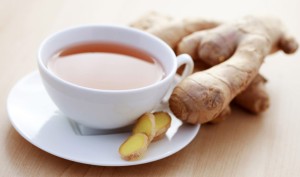 For new young adolescents that are just joining in,menstruation is a normal part of every woman’s life! During menstruation, your womb is shedding its lining accumulated monthly in preparation for pregnancy by contracting and relaxing resulting in a blood flow through the vagina – this will not happen if you are pregnant because the womb preparation would be worthwhile. Menstruation can be very distressing if the periods are painful. The medical term for painful periods is called ‘dysmenorrhea’, which has been associated with high level C –reactive protein (CRP), a biomarker for inflammation; this explains why anti-inflammatory drugs are prescribed for menstrual pain. The following are natural and nutritional ways of reducing inflammation/pain during menstruation
For new young adolescents that are just joining in,menstruation is a normal part of every woman’s life! During menstruation, your womb is shedding its lining accumulated monthly in preparation for pregnancy by contracting and relaxing resulting in a blood flow through the vagina – this will not happen if you are pregnant because the womb preparation would be worthwhile. Menstruation can be very distressing if the periods are painful. The medical term for painful periods is called ‘dysmenorrhea’, which has been associated with high level C –reactive protein (CRP), a biomarker for inflammation; this explains why anti-inflammatory drugs are prescribed for menstrual pain. The following are natural and nutritional ways of reducing inflammation/pain during menstruation
Past research studies revealed that omega 3 oils have anti-inflammatory effects and help to decrease menstrual cramps by 63percent. Examples of foods rich in omega 3 fatty acids are salmon, mackerel, soybeans and walnut
Vitamin E has been shown in a particular study to be effective in relieving women having menstrual cramps within fifteen minutes! Foods containing vitamin E are pawpaw, spinach, almonds, sweet potatoes, wheat grains, avocados
Research studies suggest magnesium deficiency may be a cause of menstrual pain in some women. Taking foods rich in magnesium can reduce the pain caused by menstrual cramps. Such foods include low fat milk, green vegetables, bananas, almonds, avocado, cashew, cheese and soybeans.
Vitamin B6 improves the use of magnesium in the body; this helps your uterine muscle to relax, thereby promoting anti-inflammatory effects. It also helps to ameliorate premenstrual syndrome such as constipation and moodiness. Foods rich in Vitamin B6 include banana, oatmeal, salmon, spinach, avocado, garlic, chicken, turkey, potatoes
Vitamin B3, also known as Niacin has been use for a long time in the treatment of menstrual cramps and other inflammatory disorders. In a study, it was reported that it offered relief to 90percent of 80 women suffering from severe menstrual cramps. Foods rich in vitamin B3 include Turkey, chicken breast, liver, peanut, green peas, brown rice, red kidney beans, avocado.
 Ginger has been found to be as effective as mefenamic acid and ibuprofen in relieving menstrual pain in women. This however should be taken in moderate amount as there is no standard recommendation of safe doses.
Ginger has been found to be as effective as mefenamic acid and ibuprofen in relieving menstrual pain in women. This however should be taken in moderate amount as there is no standard recommendation of safe doses.
Researchers found that those that have adequate intake of Iron and calcium prior and during menstrual period are less likely to suffer from premenstrual syndrome and painful menstrual pain. Foods that are rich in Calcium and iron include low fat milk, cheese, green peas, green vegetables, poultry meat, and liver.
Refined sugars, refined sugars and caffeinated drinks contribute to inflammation during menstruation. One of the ways of cutting down on processed foods is by reducing the number of times you eat snacks and soft drinks before your period and avoiding the intake during menstruation.
Research studies show that people who eat foods high in trans fats have higher levels of C-reactive protein and are more likely to suffer from menstrual pain. Foods containing trans fats include fried foods, cookies, frozen pizza, biscuit, margarines, candies, and fast foods

One of the symptoms of premenstrual syndrome is water retention/bloating, this is because your body is trying to retain water to compensate for low water intake, dehydration also worsen menstrual pain. Increasing your water intake will reduce the water retention and lead to easy flow of blood.
So that’s it, you can have a painless menstrual period! We’ll like to get feedback from you as you start this new diet, you can leave your comments below
Want to consult a dietitian directly? Visit ‘Our Services’ page